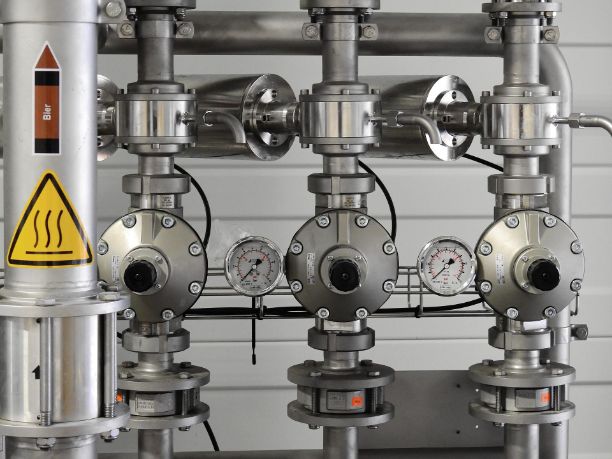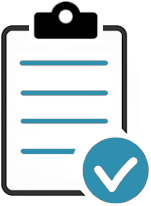Taking appropriate action to address the effects of a nonconformity may require a simple correction by the process owner or operator where it was discovered, or if a major failure or defect exists, more significant levels of resources would be needed for problem-solving and corrective action.
Contents
- What is Nonconformance & Corrective Action for ISO 45001?
- Step 1: Define the Problem and Select Interim Containment Action
- Step 2: Identify the Root-cause
- Step 3: Develop Root-cause Theories
- Step 4: Implement and Validate Permanent Corrective Actions
- Step 5: Prevent Recurrence
- Nonconformity & Corrective Action Procedure [Template download]

Nonconformities can be identified during any number of activities, including:
Our Nonconformity & Corrective Action Procedure is proven to work.
Recommendations whether emanating from audits, assessments, hazard reports, or incidents should be recorded and actioned as appropriate. In most cases the recommendations must be actioned at source but nevertheless recorded as this will facilitate statistical analysis going forward.
Other recommendations must be assigned to appropriate personnel with a target date and tracked for completion by the Health and Safety Department.
Appropriate personnel may usually be Line Management who may delegate actions but who will report back to the Health and Safety Dept upon completion, depending on the nature of the findings.
Changes to the OH&S Management System must recorded as must all document changes. Recommendations will then feed back into the system which can be updated as necessary and used for training purposes in the future.
Tracking should take place on a monthly basis by the Health and Safety Dept. Serious safety issues must however be actioned immediately.
Senior Management must review the progress on any outstanding recommendations and take the necessary action to expedite completion.
There may be instances where it is impossible to completely eliminate the cause of nonconformity, so in instances, the best organizations can do is to reduce the likelihood or the consequences of a similar occurrence happening again in order to reduce the risk to an acceptable level.
A corrective action should be considered as a reactive response to a problem since it is taken when a nonconformance is detected or upon receipt of a customer complaint.

The problem description should describe the problems in terms of what, where, when, and how big.
The description should contain facts; such as observations and documentary evidence and not assumptions.
All information must be gathered before identifying the root-cause can begin. Make sure both of the above factors are true before you move to the next step. Consider any new information that the team may have gathered since completing the initial problem description.
Define, verify and implement the interim containment action to isolate the effects of the problem from any internal/external customer until permanent corrective actions (PCA) are implemented. Validate the effectiveness of the containment actions.
An interim containment action is kept in place until a verified permanent corrective action can be implemented. In some cases, the interim containment action may be the same as or similar to the emergency response action. However, an emergency response action is implemented with minimal supporting data. An interim containment action provides more opportunity for investigation.
Any interim containment action you implement must protect the customer from the problem without the introduction any new problems. Also, a single interim containment action may not be enough. You may need to implement more than one interim containment action to fully protect the customer.
An interim containment action can be any action that protects the customer from the problem. However, before you implement an interim containment action, you need to verify that the interim containment action will work.
Conduct trial runs whenever possible. However, in some situations, your verification may simply be a matter of common sense. For example, if an interim containment action involves stopping the shipment of all products, you can be sure that customers will stop experiencing the problem.
Our Corrective Action Procedure for ISO 9001, ISO 14001 and ISO 45001 is proven to work.
You and your team must consider all of the trade-offs connected to your interim containment action. An important part of implementing an interim containment action is planning how you will implement the action.

Isolate and verify the root-cause by testing each possible cause against the problem description and test data. Also isolate and verify the place in the process where the effect of the root-cause should have been detected and contained (escape point).
Root-cause analysis (RCA) is a class of problem-solving methods aimed at identifying the root-causes of problems or events. The practice of RCA is predicated on the belief that the problems are best solved by attempting to correct or eliminate root-causes, as opposed to merely addressing the immediately obvious symptom. By directing corrective measures at root-causes, it is hoped that the likelihood of problem recurrence will be minimized.
1. Aiming performance improvement measures at root-causes is more effective than merely treating the symptoms of a problem.
2. To be effective, RCA must be performed systematically, with conclusions and causes backed up by documented evidence.
3. There is usually more than one root-cause for any given problem.
4. To be effective the analysis must establish all known causal relationships between the root-cause(s) and the defined problem.
Notice that RCA (in steps 3, 4 and 5) forms the most critical part of successful corrective action, because it directs the corrective action at the root of the problem. That is to say, it is effective solutions we seek, not root-causes.
Root-causes are secondary to the goal of prevention, and are only revealed after we decide which solutions to implement.
Our Nonconformity & Corrective Action Procedure is proven to work.
To validate those potential root-causes that are under your control, you can apply the following validations to your answers or root-causes.

Ask the following questions for every possible root-cause you identify at all levels of the 5 Whys:
Example 1 - Nonconformance:
'Components are being delivered late to our customers'
Why 1 - Why were we unable to meet the agreed-upon timeline or schedule for delivery? The job took much longer than we thought it would
Why 2 - Why did it take so much longer? Because we under estimated the complexity of the job
Why 3 - Why did we underestimate the complexity of the job? Because we made a quick estimate of the time needed to complete it, and did not list the individual stages needed to complete the project
Why 4 - Why didn't we do this? Because we were running behind on other projects
Why 5 and Root-cause - Why are we running behind on other projects? We do not allow enough manufacturing/lead time when issuing quotations to our clients.
Example 2 - Nonconformance:
'The CNC machine keeps failing'
Why 1 - Why did the equipment fail? Because the circuit board burnt out
Why 2 - Why did the circuit board burn out? Because it overheated
Why 3 - Why did it overheat? Because it wasn’t getting enough air
Why 4 - Why was it not getting enough air? Because the filter wasn’t changed
Why 5 and Root-cause - Why was the filter not changed? Because there was no preventive maintenance schedule in place informing the operator to do so.

Once you have reviewed the problem description, you can begin a comparative analysis. A comparative analysis will help you identify relevant changes in a change-induced situation.
Then you can reduce the number of possibilities that you must consider to determine root-cause.
Consider each difference you listed, and look for changes, ask yourself:
If the problem is change-induced, the root-cause must be the result of a change relative to one or more of the identified changes. It is important to remember that you have not yet moved from the ‘observations’ phase of the process.
Any information you develop during the comparative analysis must be fact based, not opinion based and must be true only for the symptom’s information. Do not rule out any facts that might be valid answers.
If it is a fact and it answers the question, write it down.

Now that you have narrowed down the possible root-causes, you need to develop theories about how the problem occurred. Theories are statements that describe how a change may have created the problem.
To test the theory, do the following:
If a theory explains the problem, but lacks information necessary to explain why it happened, gather more data:
The Root-cause Must Explain ALL Known Data
Any theories that pass the trial run are the most likely causes. If only one theory passes the trial run, then verify this theory as the root-cause. However, more than one theory may pass the trial run. In those cases (and when practical and feasible), collect and analyze any missing data for uncertain theories and re-examine information to resolve uncertainties.
If additional information reveals that a theory cannot fully explain why the problem happened eliminate it from consideration.
If it is not feasible to gather and evaluate additional information, try to verify each remaining theory. Start verification with the theory that best explains the symptoms.
Our Nonconformity & Corrective Action Procedure is proven to work.
Once you have determined the most likely cause(s), verify that it actually causes the problem. Verification is the proof you need to confirm that you have identified the root-cause. Verification is done passively and actively.
Passive verification is done by observation:
Active verification is done by manipulating the root-cause variable:
After you have determined and verified the root-cause, you need to determine the escape point of the problem. An escape point is the point closest to the root-cause at which the problem could have been detected but was not.
A control system is a system deployed to monitor the product/process and ensure compliance to health and safety requirements.
A control point is a location within the control system at which the product/process is checked for compliance to the health and safety standards.
A product or process may have more than one control point within the system. When you identify the escape point, you can work to improve or establish a system to ensure that if problems occur, they will not go undetected.
If none exists, the development of a new control system must be considered as part of the problem solution.
If the control system is not capable, the development of an improved system must be part of the problem solution. If the control point is capable of detecting the problem, then the control point is the verified escape point. Choose and verify permanent corrective actions for the root-cause and the escape point.
Select the best permanent corrective action to remove the root-cause and select the best permanent corrective action to eliminate the escape point.
Verify that both decisions will be successful when implemented without causing undesirable effects.
Our Nonconformity & Corrective Action Procedure is proven to work.
Plan and implement selected permanent corrective actions. Remove the interim containment action and monitor the long-term results.

Modify the necessary systems, policies, practices and procedures to prevent recurrence of this problem and similar ones.
Make recommendations for systemic improvements as necessary:
Serious consequences may occur when the underlying symptoms are not addressed, when the quick fix is accepted as a final, permanent solution.
Excessive reliance on containment or emergency response action will create a repeating cycle.
Problem containment is an addiction that will only get worse until root-causes are found and addressed.
All of the ISO 45001 clauses are fully-documented and explained in our Occupational Health and Safety Management System Template (OH&S).
We have procedures, templates, checklists, process maps, forms and gap analysis tools to help your documentation without missing a single input or output.
Before you invest all the hours reinventing the wheel, before you spend countless dollars outsourcing the task — try our templates.
Updated: 3rd May 2022
Author: Richard Keen

Richard is our Compliance Director, responsible for content & product development.
But most importantly he is ISO's biggest fanboy and a true evangelist of the standards.
Learn more about Richard

Don’t Try to Manage It All Alone!
Our ISO Auditors and Quality Manager Trainers have been in this industry for years, and since 2002 we’ve been providing thousands of small businesses and large corporations with the tools they need to get certified.
Instead of trying to create everything you need to follow this process from scratch, use ours. We have procedures, templates, checklists, process maps, forms and gap analysis tools to help you control your documented information without missing a single input or output.
Before you invest all the hours reinventing the wheel, before you spend countless dollars outsourcing the task — try our templates.
| QMS ISO 9001 |
EMS ISO 14001 |
OH&S ISO 45001 |
|
Nonconformity & Corrective Action Procedure The purpose of this procedure is to establish the process for identifying, documenting and analyzing nonconformities and mitigating their impacts by implementing appropriate corrective actions. Your organization’s quality management system is geared toward the proactive elimination of actual and potential deficiencies. Nonconformities in products, services, processes and our management system are investigated and action implemented to prevent their occurrence. Forms & Reports also included:
> FREE DOWNLOAD - Control of Calibrated Equipment Procedure - this will give you a good idea of what to expect when you purchase the procedure. |
$19 USD |
$19 USD |
$19 USD |
ISO 9001 + ISO 14001 IMS Corrective Action Template
Everything you need to prepare for, manage and tighten up your Corrective Action documentation. |
$35 USD |
||
ISO 9001 + ISO 45001 IMS Corrective Action Template
Everything you need to prepare for, manage and tighten up your Corrective Action documentation. |
$35 USD |
$35 USD |
|
ISO 9001 + ISO 14001 + ISO 45001 IMS Corrective Action Template
Everything you need to prepare for, manage and tighten up your Corrective Action documentation. |
$35 USD |
||
Pay by Credit Card, Debit Card, PayPal or Apple Pay.


|
Please read our Money Back Guarantee. |
Bought by Small Businesses and Large Corporations our templates have been sold online and CD since 2002.
Used by:
The Templates are used by first-timers following our step-by-step, clause-by-clause guidance documents; and experienced Quality Managers wishing to streamline and improve their existing documentation.
The application of our templates is scalable and generic; regardless of the size and type of organization. The elements that form the quality management system are the same.
1. Our customizable templates save you time and money by offering a streamlined process to create your quality documentation
2. They’ve got everything you need in one simple template
3. Proven to work our templates have helped thousands of businesses big and small achieve certification
4. Documents use styles to make reformatting and rebranding a breeze
5. Our templates are generalizable for any industry or sector. The application of our templates is scalable and generic; regardless of the size and type of organization.